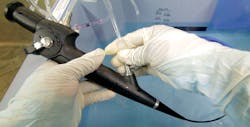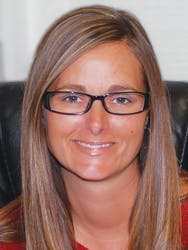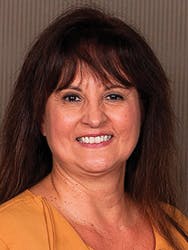To see or not to see. That’s not necessarily a question posed by William Shakespeare, but a paraphrased one nestled within the hamlet of sterile processing by an astute sterile processing professional.
In fact, many sterile processing professionals recognize that endoscopic devices must be properly and thoroughly cleaned before they place those devices into high-level disinfection or sterilization equipment in the reprocessing cycle that culminates with those devices returning to the surgical suites for use on patients.
Visual inspections of contaminated instruments returned to the sterile processing and distribution department (SPD) after use in the operating room and cleaned may represent one step in the reprocessing cycle but they are by no means the only and most reliable step toward ensuring the patient an infection-free procedure.
In short, visual inspection doesn’t enable sterile processing pros to spot everything because it’s not foolproof and likely will miss residual microscopic organisms that remain within the nooks, crannies and tubing. Still, some rely on visual inspections of cleaning effectiveness as sufficient before advancing the devices to the HLD or sterilization cycle of the process.
Frankly, that philosophy irritates James Schneiter, founder, America’s MedSource Inc., a privately held company that develops, patents and licenses healthcare devices and products to various companies in the industry.
Schneiter, a staunch advocate and evangelist for manufacturer instructions for use (IFUs) that have been validated by an independent third-party, clearly remains frustrated with the healthcare industry’s slow, if not lack of, progress in this area. (Editor’s note: For background, see HPN’s 2016 Endoscope Care Guide, November 2016.)
“We’ve watched another year go by with seemingly endless headlines and articles reporting on patient harm caused by contaminated endoscopes,” Schneiter exclaimed to Healthcare Purchasing News. “What is even worse than the headlines describing patient harm and death is the fact that the FDA has yet to demand that the manufacturers validate their cleaning and sterilization IFUs!
“In far too many of the reported cases of patient harm and death, healthcare workers were following the manufacturers’ IFUs only to be returning contaminated scopes to the procedure room,” Schneiter continued. “This is because the manufacturers had never validated their cleaning and sterilization IFUs to ensure that the scopes could in fact be safely reprocessed. Every time I read another story of patient harm and death caused by a contaminated scope whose IFUs had not been validated, my frustration and anger with the FDA goes up another notch!”
Grace Thornhill, Ph.D., Infection Prevention Fellow, Boston Scientific Corp., contends that hospitals and device manufacturers each should play a larger role in endoscope reprocessing performance improvement.
“Hospitals can help foster endoscope reprocessing by instilling a culture of safety, making sure management support investments that mitigate the risk for pathogen transmissions due to improperly reprocessed scopes,” Thornhill said. “They can take a proactive approach to ensure the facility supports execution of guidelines by installing the proper number of sinks, assigning specified ‘clean’ and ‘dirty’ areas which are separated, ensuring proper storage for disinfected scopes, and properly lighting the facility.
“Manufacturers can also play a part in fostering appropriate reprocessing by aligning the instrument Instructions For Use with recognized standards and guidelines, supporting process-based education on standardization and the removal of human error. Manufacturers should also consider focusing their efforts on advancing the technology from reusable to single-use devices and equipment.”
Sterile processing experts acknowledge that SPD pros face a number of options to help improve the quality of their integral work. Those options include, but are not limited to the following:
- Thoroughly educating, training and vetting SPD staffers on proper and effective cleaning techniques and certifying them
- Demanding, receiving and following validated IFUs from device manufacturers
- Working with manufacturers on device design and cleaning parameters to ensure effective HLD or sterilization
- Comprehensively monitoring and tracking all steps in the process with microscopic lenses, sensors and video technology
- Making sure the department is equipped with the right tools to do the job and that the workflow reinforces effective reprocessing techniques
- Switching to single-use-only endoscopic devices
- Holding staffers accountable/responsible for endoscope cleaning “violations”
Yet sterile processing experts don’t always see eye-to-eye on all or any of these seven stated options. Why? Mitigating factors tend to complicate matters.
SPD pro prepping
Education and training may only go so far, according to Brianne Flesher, CFER, Product Manager, Mobile Instrument Service & Repair, Flexible Endoscope Repair Division.
“Thoroughly educating, training and vetting SPD staffers is a little harder than it seems,” Flesher told HPN. “More often than not, training on reprocessing of all reusable devices is typically completed on the job. Even though CBSPD and now IAHCSMM (see this month’s IAHSCMM Viewpoint) are offering a certification program, there are no regulating parties that actually require certification in flexible endoscope reprocessing. If we want to see improvement, formal training should be required. The majority of damage to flexible endoscopes occurs during transport and reprocessing activities.
“On another note, as someone who has completed the certification for reprocessing flexible endoscopes, I assure you just going through certification is not enough to prepare for these duties,” she continued. “The program is good at giving you some insight to the chemistry used in reprocessing and gives you an entry level understanding to flexible endoscopes. There should be enhanced training requirements, such as additional hands on training for a designated number of hours. You cannot hand someone a book, tell them to read it, pass a test and tell them they are ready; not with these very complex pieces of equipment.”
Flesher also expressed concern about SPD pros having to request – or even demand – validated IFUs from device manufacturers.
“All SPD departments should be equipped with the IFUs on all equipment being reprocessed,” Flesher insisted. “If, in fact, it has come to a point that the facility must demand instructions for use, it is a good indicator that the wrong service provider is being used. Your service provider should be more than happy to supply any customer with IFUs as part of providing service. In fact, even if not providing the service for the equipment, the manufacturer of a piece of equipment should be required to supply the IFU.”
Flesher listed several accessible tools SPD pros can use to obtain IFUs. They include MedWrench and oneSource Docs, which charges per user but will provide just about any IFU there is, she added. “The price is minimal and the return, of course, is invaluable.”
Jon Whinnery, CHL, CSPDT, CRCST, CIS, CNA, Operations Manager, Paces MedEquip LLC, called for a “comprehensive overhaul to the education and training at many hospitals to address the disparities that exist in reprocessing instrumentation correctly and consistently by the personnel as required by the IFU from the manufacturer.”
Whinnery emphasized that “quality should be No. 1 over quantity produced,” which includes a reasonable scheduling of cases and the proper amount of inventory of scopes to address demand.”
Still, Whinnery indicated that SPD departments must enhance the skills of their reprocessing technicians beyond “the ineffective yearly checked competencies of the SPD/ENDO personnel currently performed by many institutions.” He attributes that to low job satisfaction, which negatively impacts performance. “There exists a high turnover of personnel within the departments that contributes to the inability for facilities to properly reprocess instrumentation, including but not limited to, endoscopes,” he added.
SPD and Endoscopy departments that reprocess flexible endoscopes should require reprocessing technicians to complete formal training and achieve certification for endoscope reprocessing, according to Janet Prust, Director, Global Scientific Marketing and Education, 3M Health Care.
“There are programs available that help to build the knowledge and skill sets for reprocessing, and the certification aspect provides the proof to the technician and the facility that they are fully trained and competent, Prust indicated. “These comprehensive certification programs help staff members to move beyond just following – or trying to follow – the steps. It helps to develop the background knowledge of why it is absolutely essential to follow each and every step of the process and the best way to complete the task effectively. It is also essential to implement a full quality control program and ensure the entire team understands the requirements and takes ownership of meeting those requirements.”
Partnering with manufacturers
Device manufacturers can contribute to consistency, Prust noted.
“Manufacturers can help by providing quality control products, training and helpful tools to ensure the process is followed consistently each and every time,” she said. “Endoscope reprocessing is a challenging and complex process. Taking advantage of vendor training programs, audit tools and other quick reference tools can help to make this process more manageable.”
Jean Sargent, President, Sargent Healthcare Strategies, who has extensive experience in hospital and hospital system sterile processing and supply chain operations, believes that SPD has assumed more than its share of the attention for reprocessing problems that have led to healthcare-acquired infections in the OR.
“Much of the focus has been on SPD,” Sargent noted. “Education is needed for the end users in understanding how the product is designed and what steps need to be taken in care and handling, and time it takes to complete a full processing cycle. This piece is missing in most organizations and has a downstream effect on SPD.”
In essence, Sargent argues that reprocessing education should focus on “anyone who touches the scope.” That includes the device manufacturer, the OR and SPD. She further urged device manufacturers to share insights on how a device is designed as well as how to clean it because device design instruction might help SPD techs better understand visually – and logically – how to inspect a device and where to look for issues. Further, this assistance should be “in addition to the step-by-step process adopted by all of the associations,” she added.
Should SPD techs discover issues with device design that may affect their reprocessing performance they should share that information with their department director to provide to the device manufacturers to log, track and ultimately support any revision of technology, Sargent said.
Whinnery thinks SPD pros should work more closely with manufacturers, too.
“Manufacturers need to build into their product lines the engineering features that allow institutions to perform the reprocessing steps necessary to consistently and safely on a predictive basis properly clean and sterilize the endoscopes,” he said. “The reprocessing phase of the endoscope should receive equal time during the design and development stages, specifically addressing the difficulty inherently present during the reprocessing phase of the endoscopes. Many times, the reprocessing component of endoscopes during the design stage does not receive the required time to optimize the reprocessing phase of the given endoscope and allow for reasonable compliance and success in executing the IFUs provided by the manufacturer.”
In terms of education and training, SPD needs to ensure that all staff are certified, and have been trained and cross-trained in all aspects of pre-cleaning, cleaning, monitoring and storage; and that device manufacturer and other company representatives are engaged in staff education minimally twice monthly, according to Melanie Miller, R.N., CVAHP, CNOR, CSPDM, Principal, Healthcare Value Management Experts Inc., and a veteran hospital sterile processing, supply chain and value analysis executive.
Melinda Benedict, CFER, Manager, Infection Control Program, Olympus America Inc., concurs. SPD pros should “keep current on scientific publications and professional society guidelines to understand trends and issues in the industry, join a local society chapter and attend meetings to learn from peers and support certification for reprocessing technicians,” she said.
Working with device and product manufacturers can help SPD pros “reduce the threat of infection,” said Chris Antonucci, Director of Marketing, STERIS Infection Prevention Technologies.
“Many manufacturers offer education for SPD staff to help them understand IFU processes and assist with competency validation,” he continued. “Additionally, SPD staff should post easily accessible/viewable instructions for leak testing, dilution rates and cleaning directly above the cleaning sink. Also, it’s important to be sure a water line sticker is placed in the sink to ensure the same level of water is being used each time during the manual cleaning process.”
Antonucci emphasized that SPD staff should be “aware and knowledgeable of the harmful effects a dirty scope or instrument can have on the patient.” That’s why SPD should “implement a cleaning verification test for each scope before the HLD or sterilization process, locate IFUs nearby for quick reference and perform annual competency testing on each employee.”
All teched out and up
Tracking reprocessing workflow, progress and performance through technology upgrades should contribute to improvement, SPD experts state.
Olympus’ Benedict encourages healthcare organizations to “consider new technologies and protocols to enhance patient safety, such as electronic endoscope and documentation tracking software, cleaning verification testing, and/or culturing.” SPD leaders should source these operations and contact manufacturers for more details.
“Creating a comprehensive check list to follow each device that is reprocessed would be beneficial,” said Mobile Instrument’s Flesher. “This could be in the shape of paper documents or done electronically. This validation check list should be created and specific to each type of device. Sure, it would be labor-intensive in the beginning, but again the return would be invaluable. This check list should act as a final quality check, and not have listed all of the steps for reprocessing as that is available for IFU. It should reflect the point-of-use cleaning, the manual cleaning, verification testing, HLD or sterilization procedures and allow for whomever carried out each specific tasks to sign off they completed it correctly. In addition, samples should be selected at random at designated intervals to make sure the cleaning processes were done correctly as this is typically where trouble begins if steps are not followed or missed.”
Sometimes the tech can focus on the fundamentals, according to Angela Maxwell, Senior Clinical Operations Consultant, Cardinal Health.
“SPD should maintain two separate rooms for dirty scopes and clean scopes, follow the organization’s policy and protocol manual for pre-soaking scopes in the appropriate cleaning fluid for the appropriate time, and use containers with box locks for clean scopes,” Maxwell noted.
The emergence of single-use endoscopes and related devices offers another angle to pursue but both Sargent and Flesher urge caution.
“You really need to determine the return-on-investment as well as the effects on patient outcomes,” Sargent insisted.
“Single-use devices seem like a great idea until you really break down the cost,” Flesher noted. “According to an article in IAHCSMM’s publication, the author broke down the costs involved in reprocessing one flexible endoscope. In this breakdown, she demonstrated that the median cost for reprocessing activities, which includes labor costs, necessary PPE, point-of-use and manual cleaning supplies, all inspections, leak-testing protocols, cleaning verification tools, the sterilization process, and drying and storage requirements is roughly or on average $200.49 per unit. Now depending on care and handling practices, number of cases and available inventory, the cost to maintain the equipment will certainly vary.
“However, in a case study we recently completed, a customer was using their equipment approximately 180 times per year,” she continued. “They had roughly $102,000 in repair and maintenance per year on their inventory. So when averaging out over 180 cases and roughly $567 in repair and maintenance and $200 per case in reprocessing activities, the customer cost-per-case was $767. For them, the cost per case to switch to single-use devices was going to be a minimum of $1,500 per case. As you can see, increased focus on reprocessing activities is still going to far outweigh the true cost of transitioning to single-use devices.”
Read on…
About the Author
Rick Dana Barlow
Senior Editor
Rick Dana Barlow is Senior Editor for Healthcare Purchasing News, an Endeavor Business Media publication. He can be reached at [email protected].









